The darts bullseye size is a crucial aspect for any darts player, whether a seasoned professional or a casual enthusiast. It’s a standard measurement across almost all regulation dartboards, providing a consistent target. This article will delve into the precise dimensions of the bullseye, explore its importance in the game, and offer helpful tips to improve your accuracy.
⚠️ Still Using Pen & Paper (or a Chalkboard)?! ⚠️
Step into the future! The Dart Counter App handles all the scoring, suggests checkouts, and tracks your stats automatically. It's easier than you think!
Try the Smart Dart Counter App FREE!Ready for an upgrade? Click above!
Understanding the darts bullseye size is fundamental to improving your game. While the overall dimensions of a dartboard are standardized, knowing the precise measurements of the bullseye can significantly impact your aiming technique. This is because accuracy within this small target area directly translates to a higher score. This article will not only cover the size of the bullseye but also offer insights into how to effectively target it. We’ll explore common mistakes, provide tips for better aiming, and even discuss the impact of different dart weights and throwing techniques. To assist you in keeping score, consider using an App to score darts.
The Precise Dimensions of the Darts Bullseye Size
The darts bullseye size is universally standardized across regulation dartboards. The inner bullseye, also known as the double bull, measures a tiny 12.7mm (0.5 inches) in diameter. This small target area is where the highest points are scored, requiring pinpoint accuracy. The outer bullseye, which surrounds the inner bull, is considerably larger, measuring 31.8mm (1.25 inches) in diameter. This larger target, while awarding fewer points, is still a prime area to aim for due to its scoring potential.
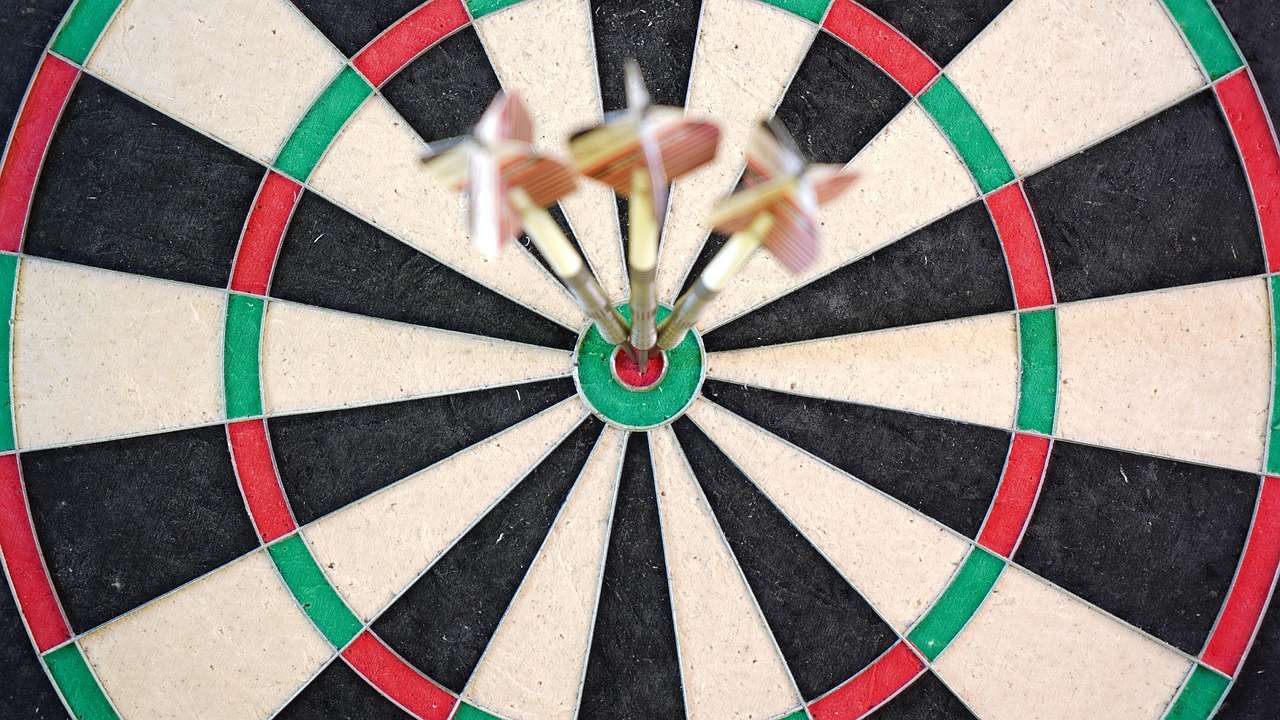
Understanding these precise dimensions of the darts bullseye size allows players to visualize the target area accurately. This visualization is crucial for improving accuracy and consistency in your throws. By mentally breaking down the target into its individual components, you can practice aiming for different sections, honing your skills and building confidence.
Why the Darts Bullseye Size Matters
The darts bullseye size, though small, significantly impacts the overall scoring in the game. A successful hit on the inner bullseye is worth 50 points, while the outer bullseye is worth 25 points. These are the highest scores achievable on a single dart throw, making precise targeting of this area paramount for high scores and competitive play. The small size of the inner bull significantly enhances the challenge of the game, testing players’ precision and skill.
Improving Your Aim: Targeting the Darts Bullseye Size
Achieving consistent hits on the darts bullseye size, especially the inner bull, requires dedicated practice and a refined technique. It’s not just about strength; it’s about control, consistency, and proper form. Several factors can impact your accuracy, from your grip and stance to your follow-through and mental focus. Let’s explore some key tips to improve your aiming:
- Consistent Grip: Maintain a firm but relaxed grip on your darts, ensuring consistent release each time.
- Proper Stance: Adopt a comfortable and balanced stance, keeping your feet shoulder-width apart.
- Focus and Visualization: Visualize the target (darts bullseye size) before each throw, focusing on hitting the center.
- Smooth Throw: Avoid jerky movements; aim for a smooth, controlled throwing motion.
- Follow-Through: Follow through with your throwing arm after releasing the dart, maintaining a consistent motion.
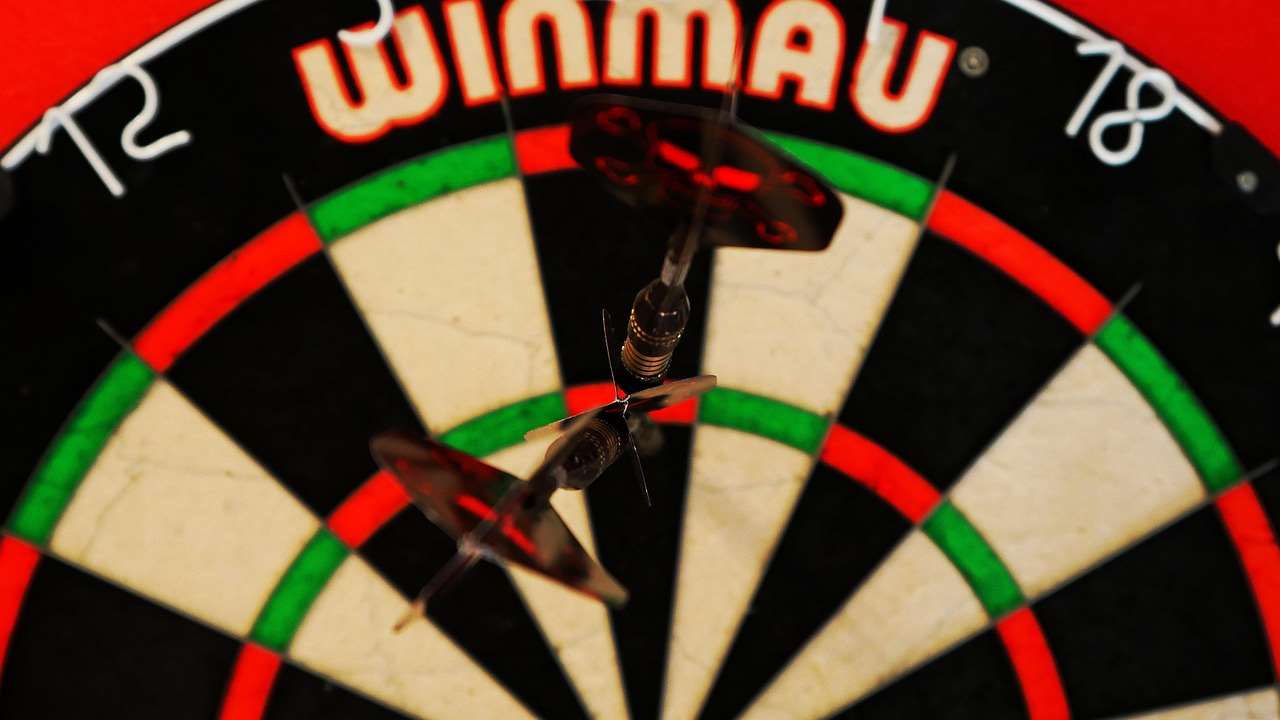
Mastering these techniques will significantly improve your accuracy. Consistent practice is key to developing muscle memory and refining your technique for hitting the darts bullseye size reliably.
Common Mistakes to Avoid
Many common mistakes can hinder your ability to hit the darts bullseye size consistently. Avoiding these pitfalls is essential for improvement. Some common mistakes include:
- Inconsistent Grip: Varying your grip from throw to throw affects your accuracy.
- Poor Stance: An unsteady stance can lead to inaccurate throws.
- Jerky Throw: A jerky or uncontrolled throw will rarely hit the target consistently.
- Lack of Focus: Distractions or a lack of concentration will affect your aim.
By identifying and correcting these mistakes, you’ll be well on your way to hitting the darts bullseye size with greater accuracy. Remember, practice makes perfect, and paying attention to the details of your technique will dramatically improve your performance.
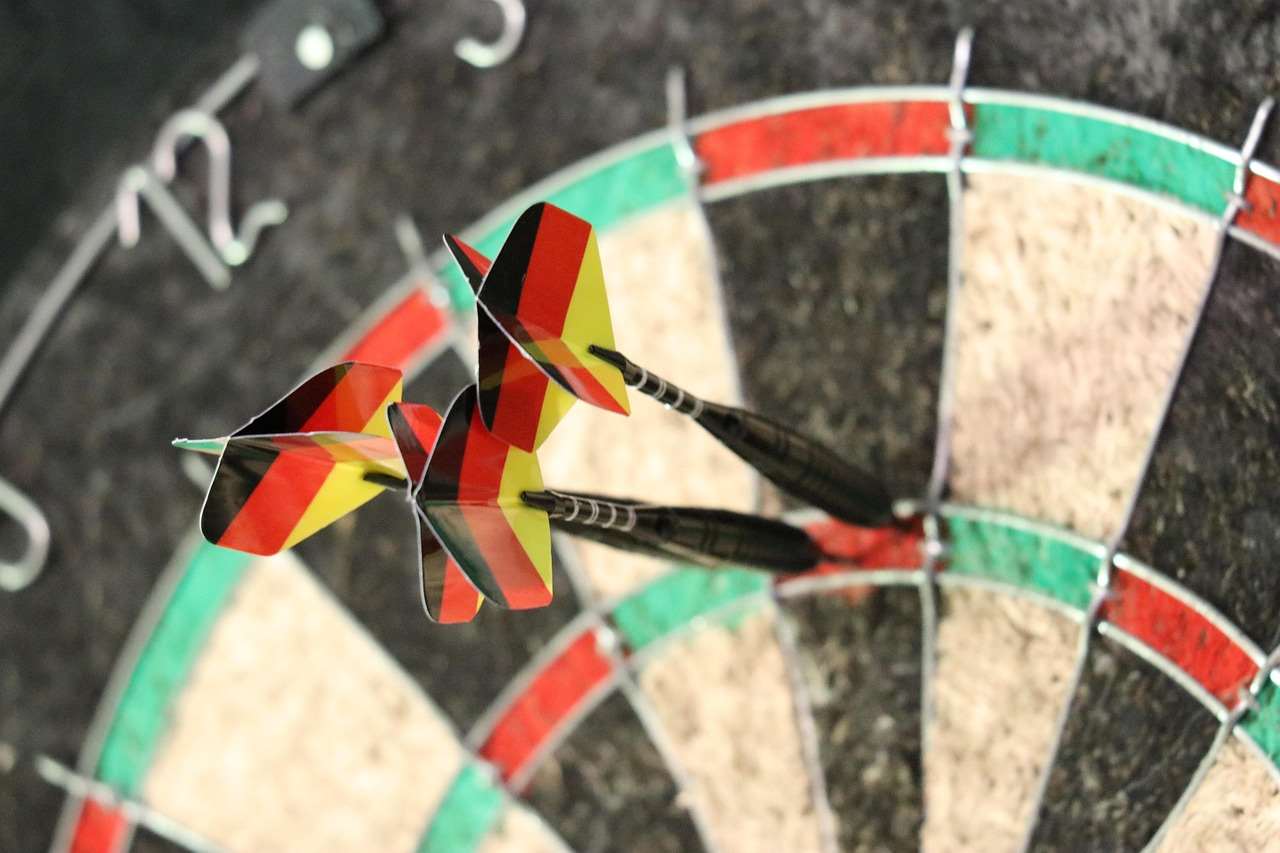
The Importance of Dart Weight and Throwing Technique
Choosing the right dart weight is crucial. The weight of your darts significantly impacts your throwing technique and accuracy. Too heavy, and you might struggle with control; too light, and you might lack power. Experiment with different weights to find what best suits your throwing style and enables you to consistently aim for the darts bullseye size. For more on this, check out our comprehensive guide on darts weight guide.
Your throwing technique is equally important. A smooth, consistent throwing motion is key to accuracy. Practice your throwing technique, focusing on consistency and control. Avoid jerky movements and ensure your release is smooth and controlled. Analyzing your throwing style and identifying any inconsistencies is crucial for improvement, especially when targeting the smaller darts bullseye size.
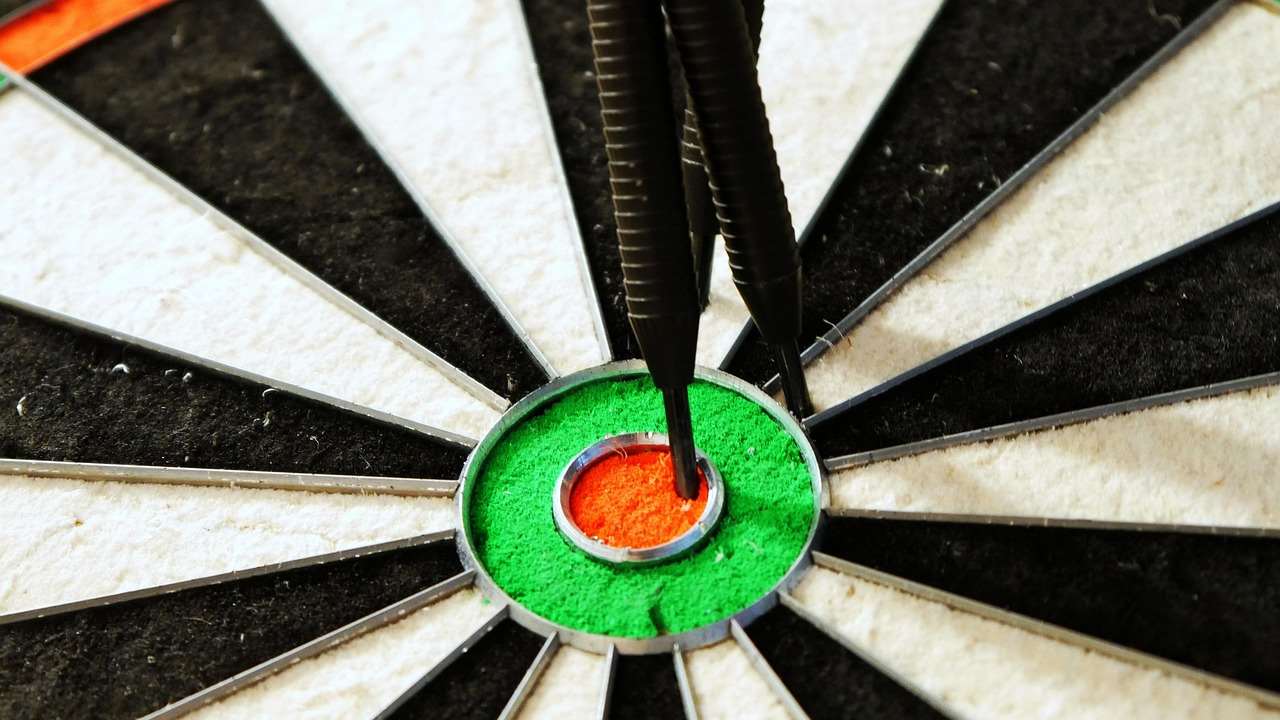
Understanding the Scoring System: Beyond the Darts Bullseye Size
While the darts bullseye size offers the highest point values, understanding the entire dartboard’s scoring system is vital. The numbers surrounding the bullseye offer varying point values, and understanding these points is just as crucial as mastering the bullseye. Knowing the scoring system allows for strategic gameplay, and learning to hit doubles and triples significantly improves your overall score. For instance, you can read more about how to darts scoring on board.
Understanding the scoring system, including calculating scores and understanding different game formats, can significantly enhance your game. Being able to quickly calculate your score during games and understand the point values of the various sections improves your strategic approach. You can also delve into specific game scores, such as darts scores grand prix, to see how professionals strategize and leverage the entire board, not just the darts bullseye size.
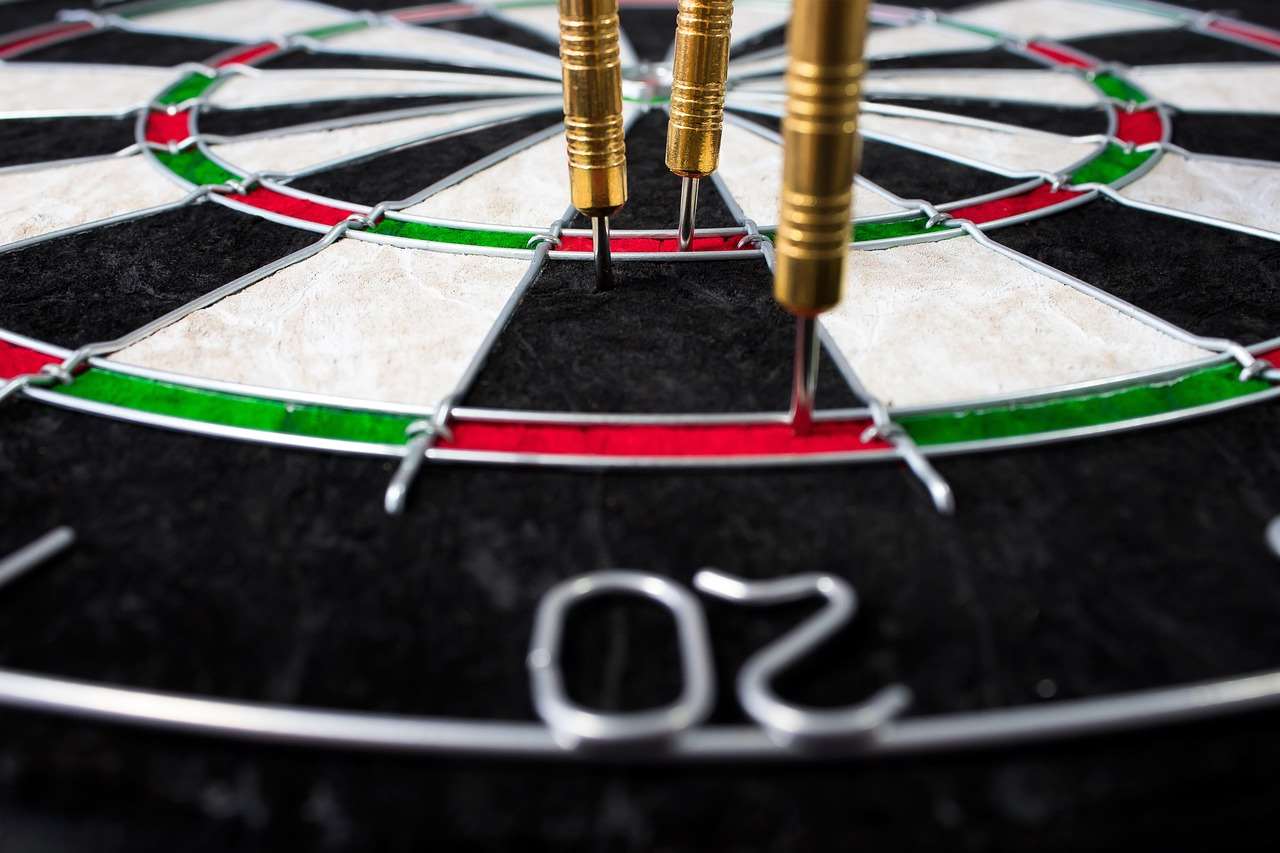
Beyond the Bullseye: Other Factors Affecting Accuracy
Several other factors influence accuracy beyond just the darts bullseye size. These include: the quality of your darts, the condition of your dartboard, the ambient lighting, and even your mental state. Using high-quality darts with consistent weight and balance can greatly improve your accuracy and overall game, just as maintaining a clean and properly mounted dartboard is essential for accurate throws. Consider what dartboard is best for your skill level and playing environment.
Adequate lighting is essential for good visibility of the board and accurate aiming. Mental focus and concentration play a crucial role. Stress and distractions can significantly affect performance. Regular practice and consistent training help improve focus and manage stress, leading to improved aim and performance. Learn more about the darts ring around bullseye and how to improve your aim to hit those specific areas to improve your scores.
Conclusion
The darts bullseye size is undeniably a critical factor in darts. Understanding its precise dimensions, and incorporating proper techniques, dart weight considerations, and mental preparation all significantly improve your chances of hitting that coveted bullseye and increasing your overall score. Remember consistent practice, focused attention to detail, and continuous self-assessment are crucial for achieving accuracy and mastery in the game. So, get out there, practice your aim, and start hitting those bullseyes!
For further reading, you might find our articles on ton plus finish darts meaning and best darts double percentage beneficial. Good luck and happy throwing!
Hi, I’m Dieter, and I created Dartcounter (Dartcounterapp.com). My motivation wasn’t being a darts expert – quite the opposite! When I first started playing, I loved the game but found keeping accurate scores and tracking stats difficult and distracting.
I figured I couldn’t be the only one struggling with this. So, I decided to build a solution: an easy-to-use application that everyone, no matter their experience level, could use to manage scoring effortlessly.
My goal for Dartcounter was simple: let the app handle the numbers – the scoring, the averages, the stats, even checkout suggestions – so players could focus purely on their throw and enjoying the game. It began as a way to solve my own beginner’s problem, and I’m thrilled it has grown into a helpful tool for the wider darts community.